
[ad_1]

The writer awaits a bowl of ramen noodles in a Tokyo eating place.
Yuki Noguchi/NPR
conceal caption
toggle caption
Yuki Noguchi/NPR

The writer awaits a bowl of ramen noodles in a Tokyo eating place.
Yuki Noguchi/NPR
I used to be born and raised within the American Midwest, however love visiting my oldsters’ place of birth in Japan. Central to each shuttle there’s at all times the meals: Oh my goodness, the meals.
Consuming is a raging nationwide obsession right here, with just right reason why. Staggering forms of meals are to be had all over; it is all scrumptious and — maximum impressively, to me — at all times contemporary.
Soba noodles come made to reserve, with flash-fried seasonal tempura greens. Mouthwatering sushi and curry rice lunches are bought on teach platforms. You’ll be able to wander previous instances of distinctiveness meals, from marbled meats to miso-pickled greens to hand-crafted gyoza dumplings, within the depa chicka, or division retailer basements.
There is a slavish devotion to the gourmand that would possibly appear loopy any place else. In summer time months, home peaches come boxed in cushions to give protection to flesh as subtle as a child’s cheek.
What is exceptional about Japan is that meals like that is to be had virtually all over you flip, but weight problems isn’t the general public well being danger it’s within the U.S.
Each the U.S. and Japan are rich industrialized nations, however they occupy reverse ends of the weight problems spectrum. Lately, 43% of the U.S. inhabitants has weight problems — just about 10 instances Japan’s price of four.5%.
I ask Terry Huang, a well being coverage professor on the Town College of New York, in regards to the obvious contradiction in Japan’s courting with meals. He says there are quite a lot of causes, maximum of that are rooted in Japan’s cultural historical past. He says Japan — and Asian nations usually — position higher emphasis on well being and longevity, as in comparison to comfort, say, or fast gratification.

Conventional Eastern delicacies facilities round greens, soy merchandise like miso, and seaweed or seafood, making it naturally prime in fiber and just right fat.
Yuki Noguchi/NPR
conceal caption
toggle caption
Yuki Noguchi/NPR
“It can be laborious to quantify, however qualitatively it is crucial as it influences a lot of ways we design our communities, how we consider meals, how we have interaction in way of life behaviors typically,” he says.
In different phrases, the elemental assemble of existence in Japan makes it more straightforward to are living fitter.
Huang calls this “default design” and he says it actually comes in-built: The truth that Eastern towns are densely populated, however secure, permits for heavy reliance on public shipping, for instance. And populations that use public shipping have a tendency to stroll extra and get extra workout simply by distinctive feature of that design.
My 74-year-old mom tells me errands are her number one type of workout; the incidental strolling from doing chores and buying groceries naturally provides up. I documented that throughout my shuttle: I spent 8 days shadowing my oldsters, who are living in central Tokyo, and my Apple watch health tracker confirmed I walked a mean of over 6 miles an afternoon, which is 60% greater than I normally do dwelling within the suburbs.
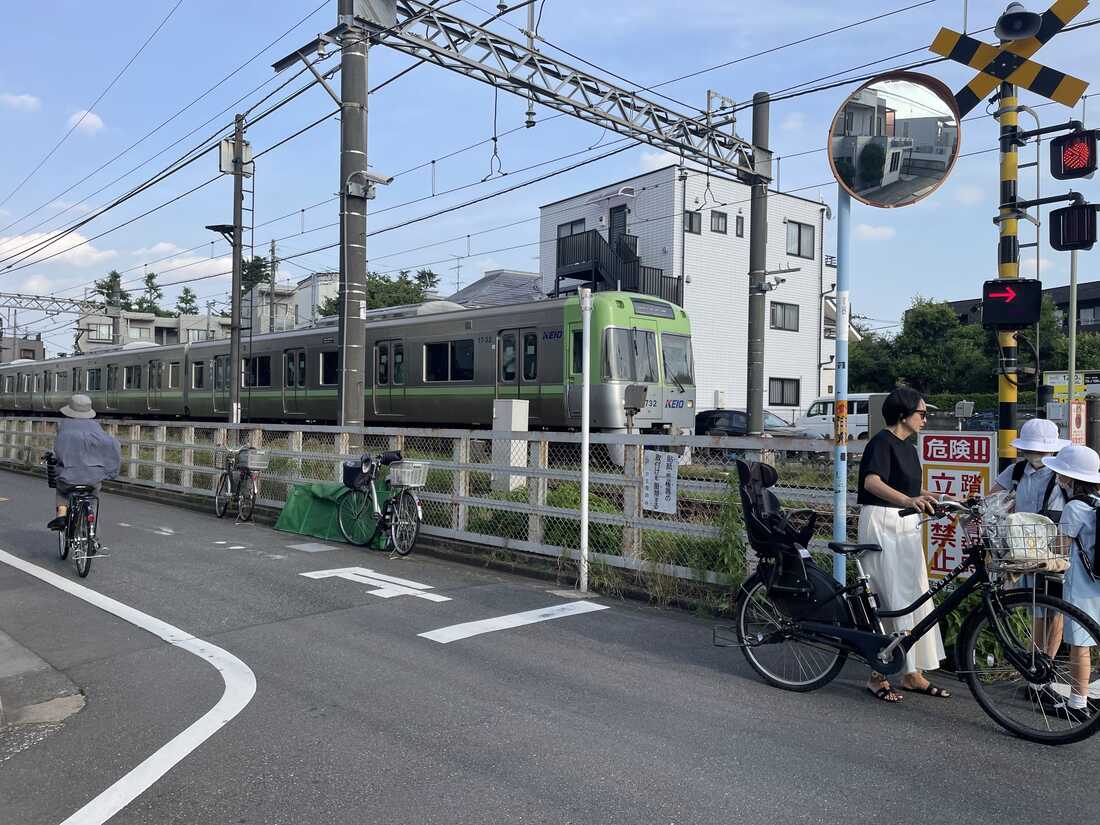
Public transportation is extensively to be had in Japan and it will increase bodily process, in comparison to commuting by means of automotive.
Yuki Noguchi/NPR
conceal caption
toggle caption
Yuki Noguchi/NPR

Public transportation is extensively to be had in Japan and it will increase bodily process, in comparison to commuting by means of automotive.
Yuki Noguchi/NPR
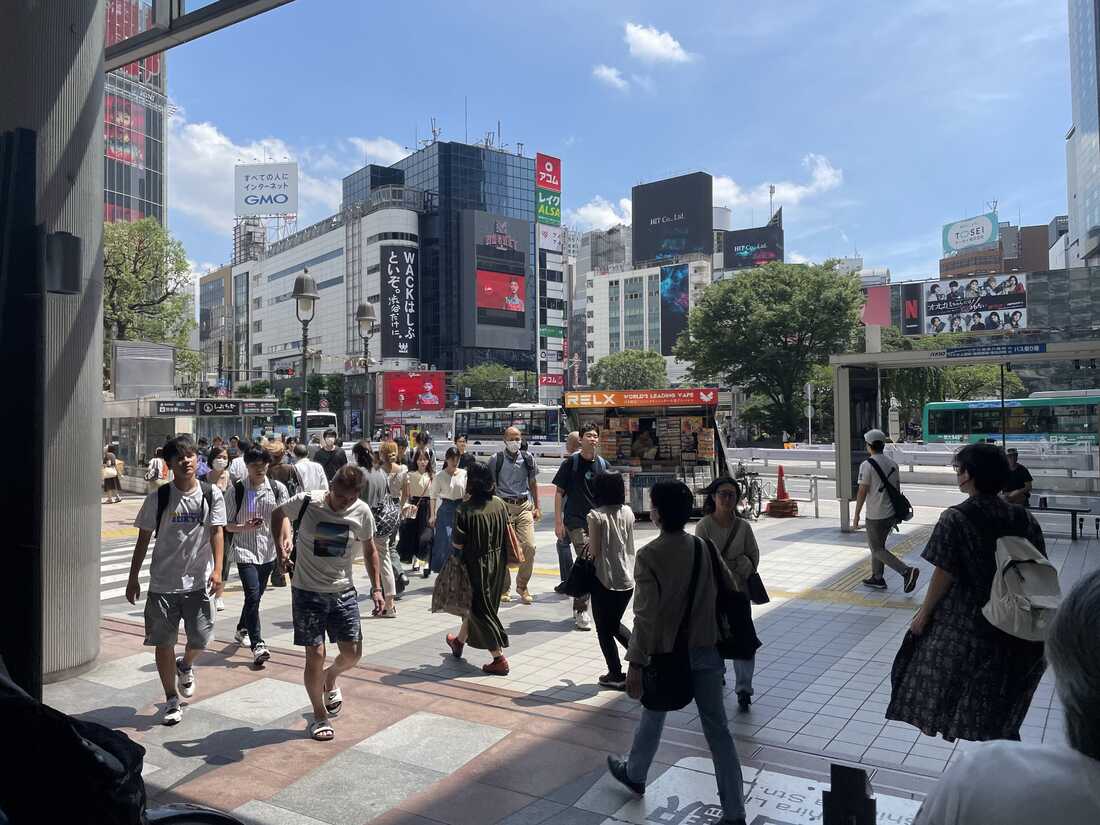
Eastern towns are constructed round public transportation, which inspires extra motion, and will increase workout around the inhabitants.
Yuki Noguchi/NPR
conceal caption
toggle caption
Yuki Noguchi/NPR
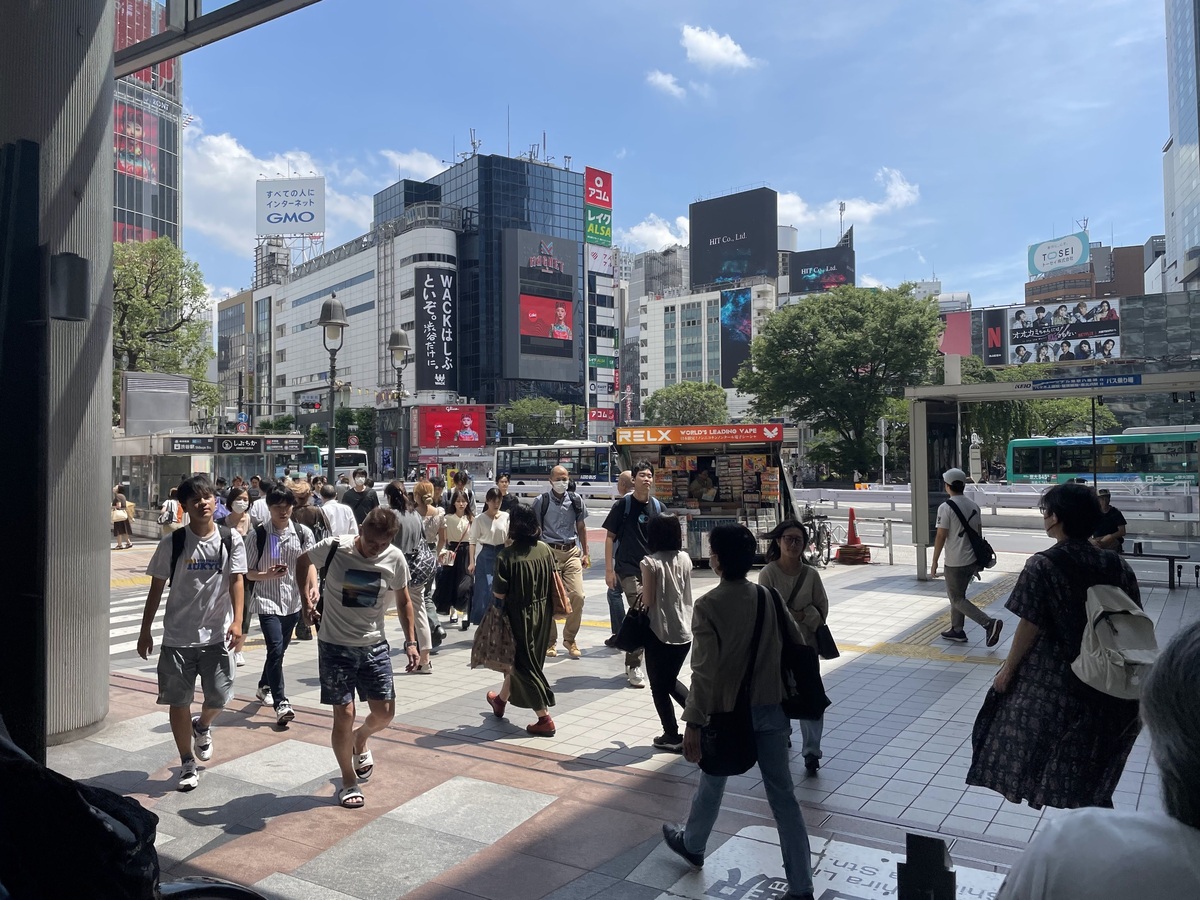
Eastern towns are constructed round public transportation, which inspires extra motion, and will increase workout around the inhabitants.
Yuki Noguchi/NPR
That is why default design is so tough. It bakes wholesome conduct into day-to-day existence. Huang says that is crucial as a result of another way wholesome conduct turns into much less automated, and extra depending on particular person effort.
“Any time you upload further burden in making plans for a wholesome meal or going to workout, that is going to translate right into a decrease probability of other folks in fact attractive,” he says.
I noticed that is true even in terms of meals; Japan has a type of default design that helps fitter consuming. It stems from a standard vitamin that leans closely on greens, seaweed and seafood. However it is also embedded into the tradition of consuming there, Huang says.
“Culturally, in terms of meals, there’s a more potent emphasis on high quality and refinement within the preparation of every dish versus amount,” he says.
It is true even for issues the Eastern believe speedy meals, like some of the Tokyo ramen stalls I ducked into with my mom on a up to date consult with.
Around the serving counter, we watched the chef draw broth from fish flakes and red meat bones. He ladled the soup onto noodles and a skinny slice of roast red meat, inexperienced onions, bamboo shoots, crowned off with nori, or seaweed. The end result used to be savory, nourishing, and value lower than $5.

Ramen ready the standard approach in a Tokyo eating place.
Yuki Noguchi/NPR
conceal caption
toggle caption
Yuki Noguchi/NPR
I believe my favourite instance that presentations this distinction with the U.S. is Eastern comfort retailer meals. There’s no marketplace for supersized slushies right here, or day-old scorching canine cooked on rollers. Eastern comfort tales, referred to as conbini, function refrigerated partitions of noodle salads, rice balls, bento containers, all completely portioned and scrumptious, if you happen to inquire from me.
Once more, there may be an adherence to freshness: As a substitute of the usage of preservatives and stabilizers as such a lot processed meals within the U.S. does, manufactures print sell-by labels on every bundle which are time-stamped to the minute. Unsold wares are tracked and swapped out more than one instances an afternoon.
This isn’t to mention Japan is proof against industrialized and ultra-processed meals developments riding up weight problems charges international. Extra weight is a rising worry right here, too. But the inhabitants is remarkably resilient within the face of that world pattern.
Why? One key issue my mother strikes a chord in my memory of — and lots of researchers level to — is the Eastern faculty lunch. It’s unfastened, scratch-made and balanced, however that’s not all. Beginning in fundamental faculty, lunchtime itself is handled like a category in diet, says Michiko Tomioka, a Eastern nutritionist primarily based in New Jersey. Youngsters serve every different meals, assist with blank up, and are inspired to devour the whole thing they are given.
“That isn’t one thing lets even believe right here [in the U.S.],” she says.
This lunchtime ritual establishes a commonplace cultural figuring out about what wholesome consuming seems like. Tomioka says. And that’s the reason the way it additionally turns into a addiction that endures.
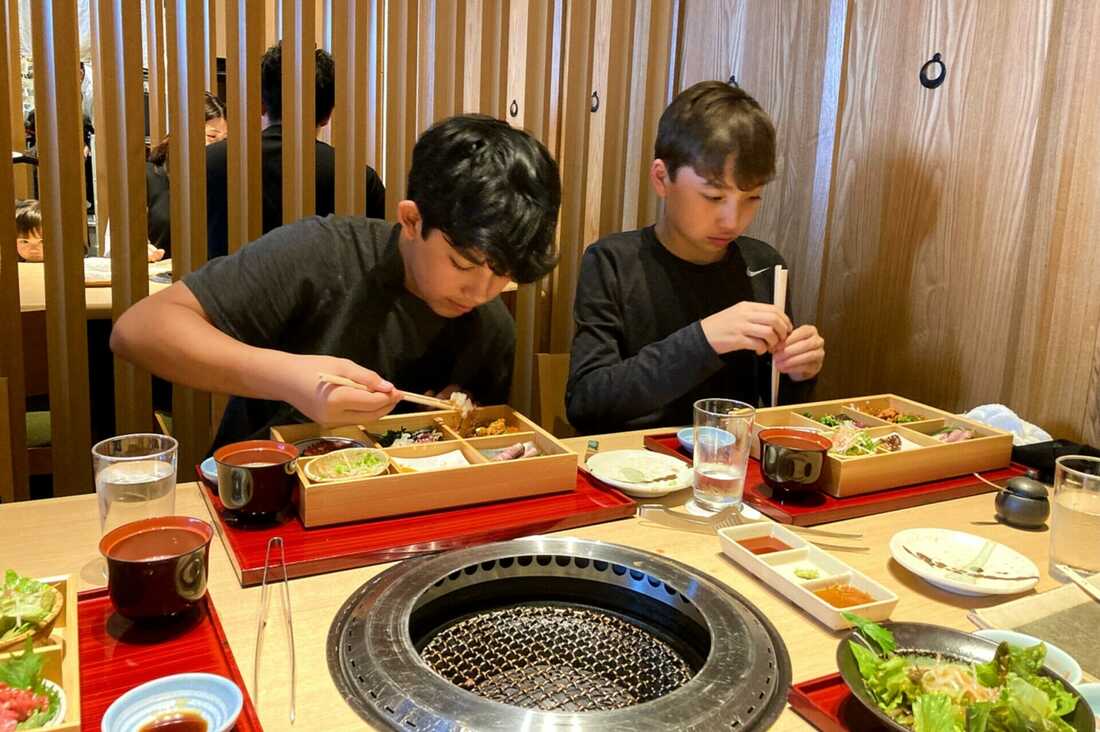
The writer’s teenager sons experience contemporary lunch throughout a up to date consult with to Japan.
Yuki Noguchi/NPR
conceal caption
toggle caption
Yuki Noguchi/NPR
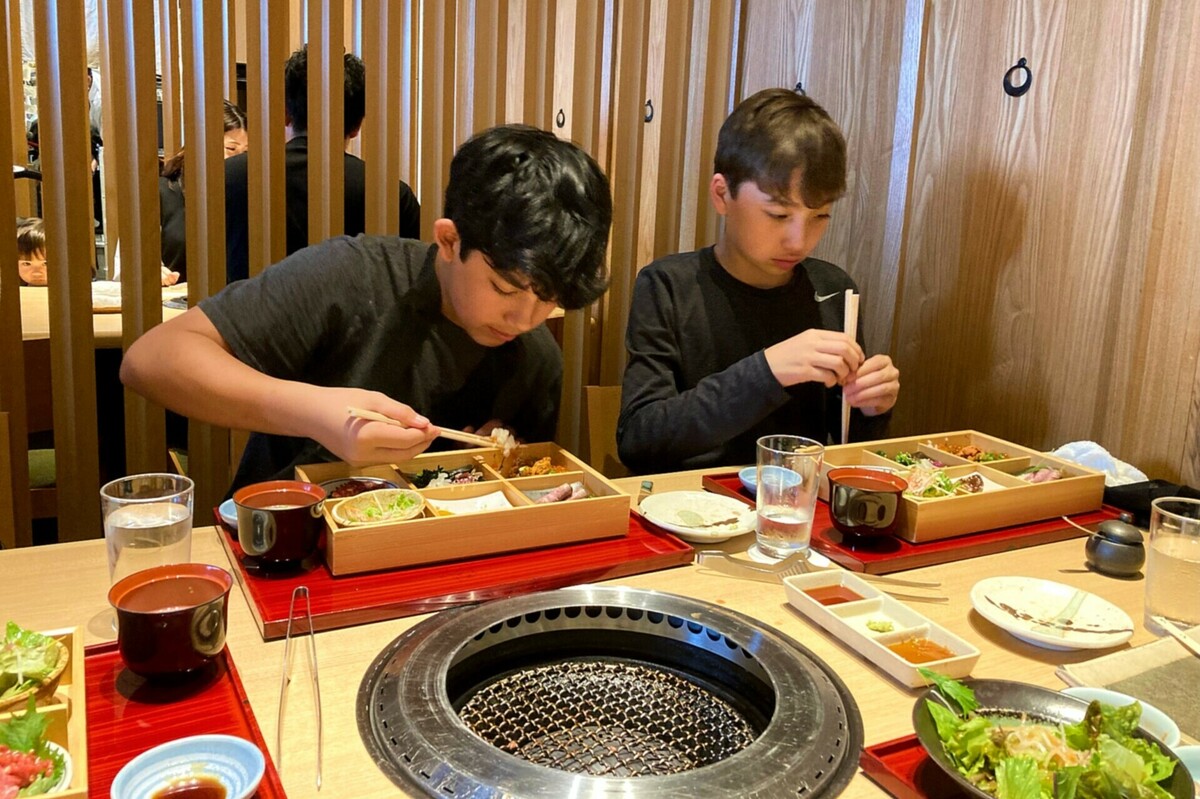
The writer’s teenager sons experience contemporary lunch throughout a up to date consult with to Japan.
Yuki Noguchi/NPR
I continuously suppose how modern it might be for my existence elevating two teenage sons, if I had a Eastern conbini inside of strolling distance from my area in suburban Washington DC. Maximum days, I check out to stick to a Eastern way to meals, which is in fact a nearly unattainable dedication to stay, particularly as a operating solo father or mother.
It way riding, continuously, to part a dozen other grocery or distinctiveness shops to inventory contemporary substances, like shrimp, dried seaweed (nori), or produce like Eastern yams and chives, then surroundings apart time all through the day to clean, chop, cook dinner and blank. (I additionally stay a small lawn.) There’s no different choice I do know of but that meets my 3 golden standards — wholesome, economical and scrumptious.
I am vulnerable to griping: Why should consuming contemporary require taking up what looks like a 2d or 3rd task? Many father or mother pals of mine appear to treat my efforts as laudable, perhaps, however lunatic.
The truth is, I am extraordinarily fortunate; there are such a large amount of privileges implicit in with the ability to prioritize contemporary consuming or wholesome dwelling in The usa. Trendy existence presents few households the time, cash or get right of entry to to the forms of issues I am able to do (a minimum of on occasion).
In 3 years protecting well being, I have come to know how such a lot of of the well being issues in The usa stem from inequities that start, at core, with what we grew up consuming and the way of living we lived. So I additionally marvel how a lot at an advantage we may well be, as a inhabitants, if dwelling or consuming neatly wasn’t a burden we put on folks, however one thing our society supported — by means of design.
Pictures by means of Yuki Noguchi. Modifying and visible manufacturing by means of Carmel Wroth. The published model of this tale used to be edited by means of Jane Greenhalgh.
[ad_2]

